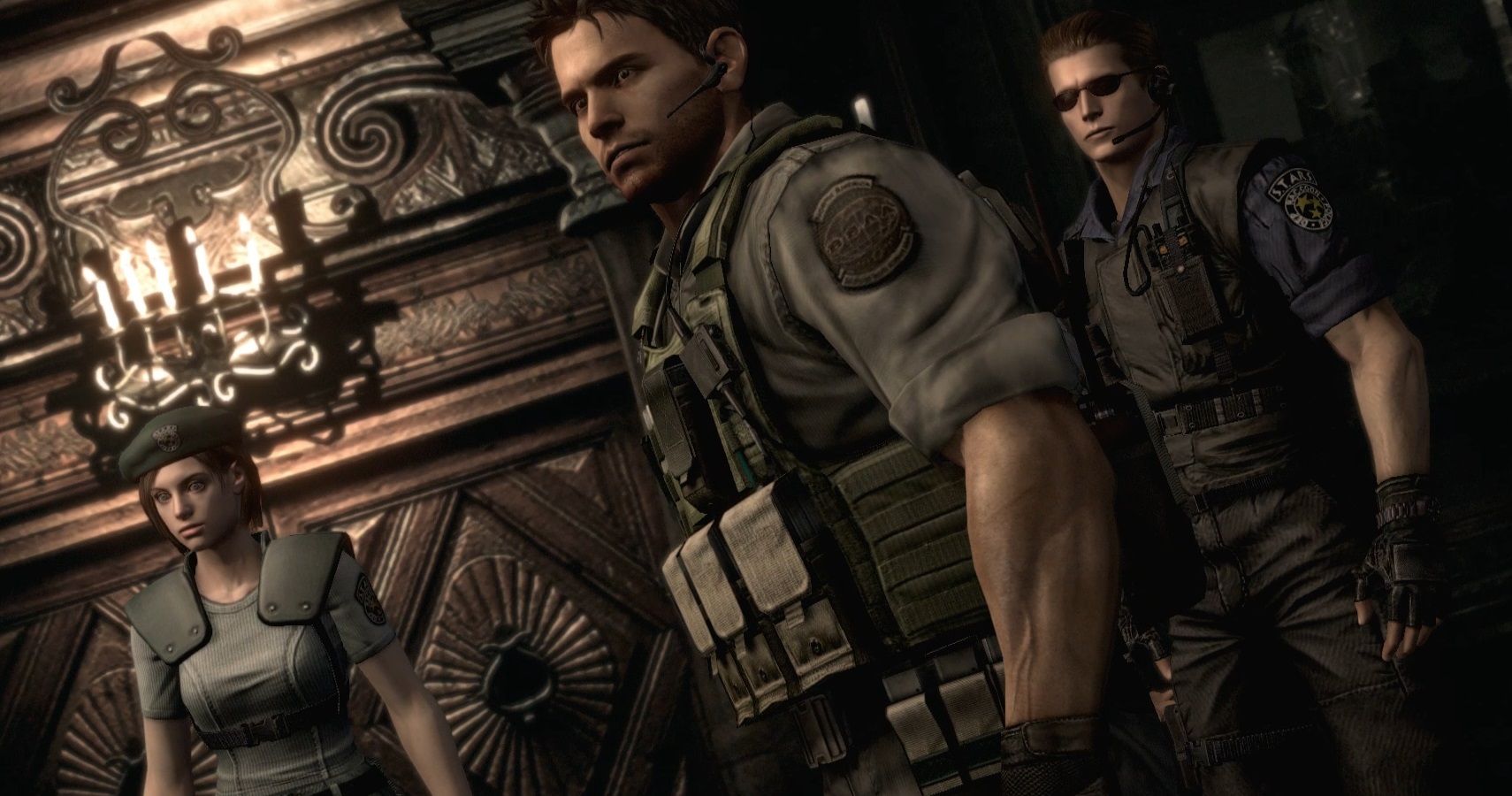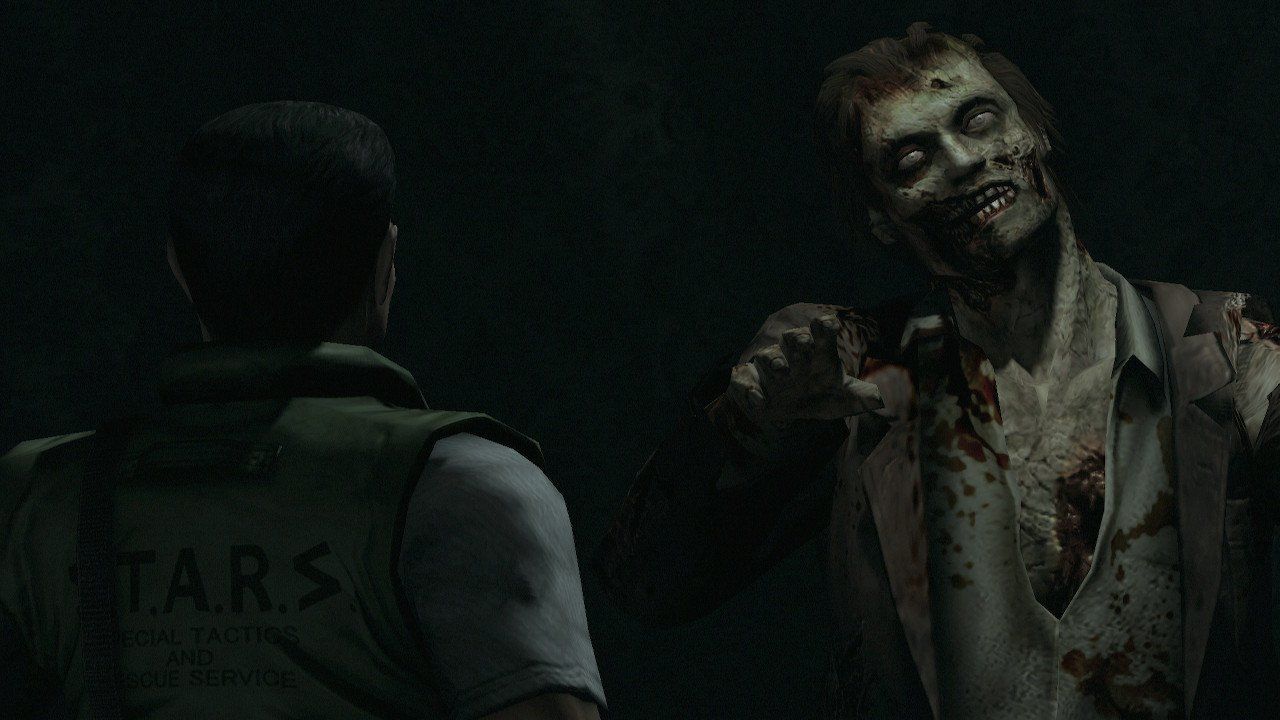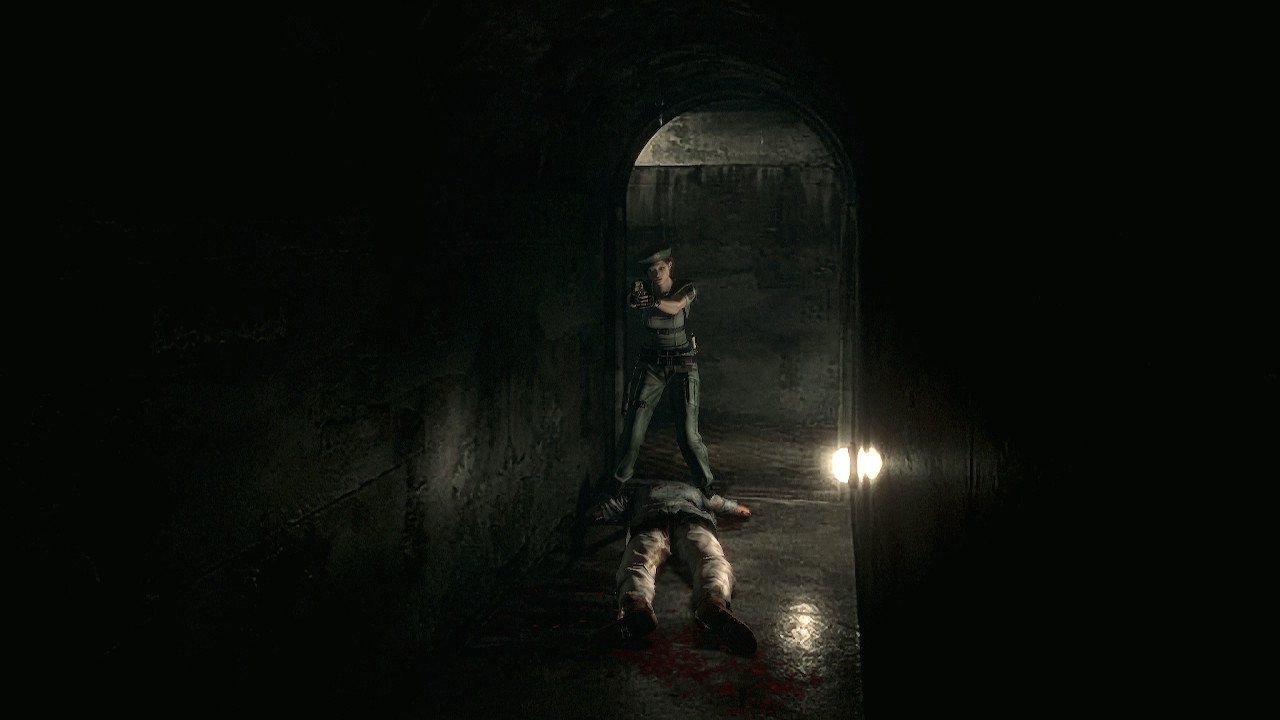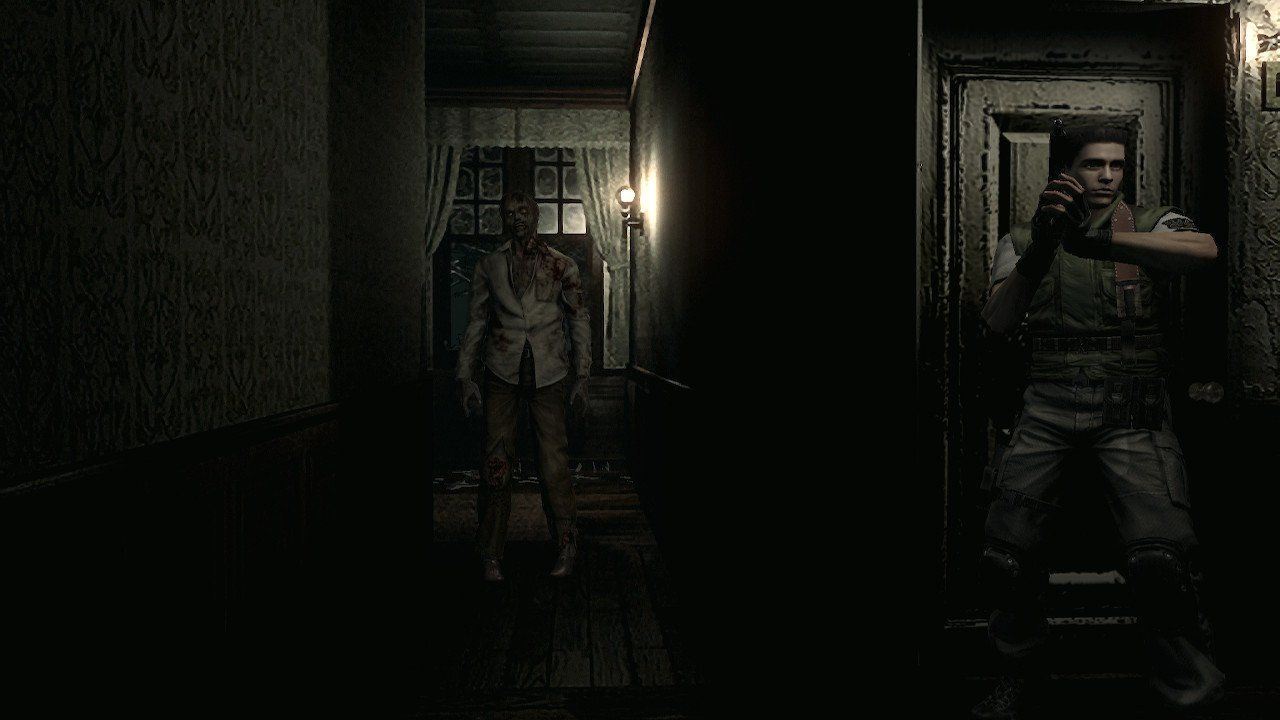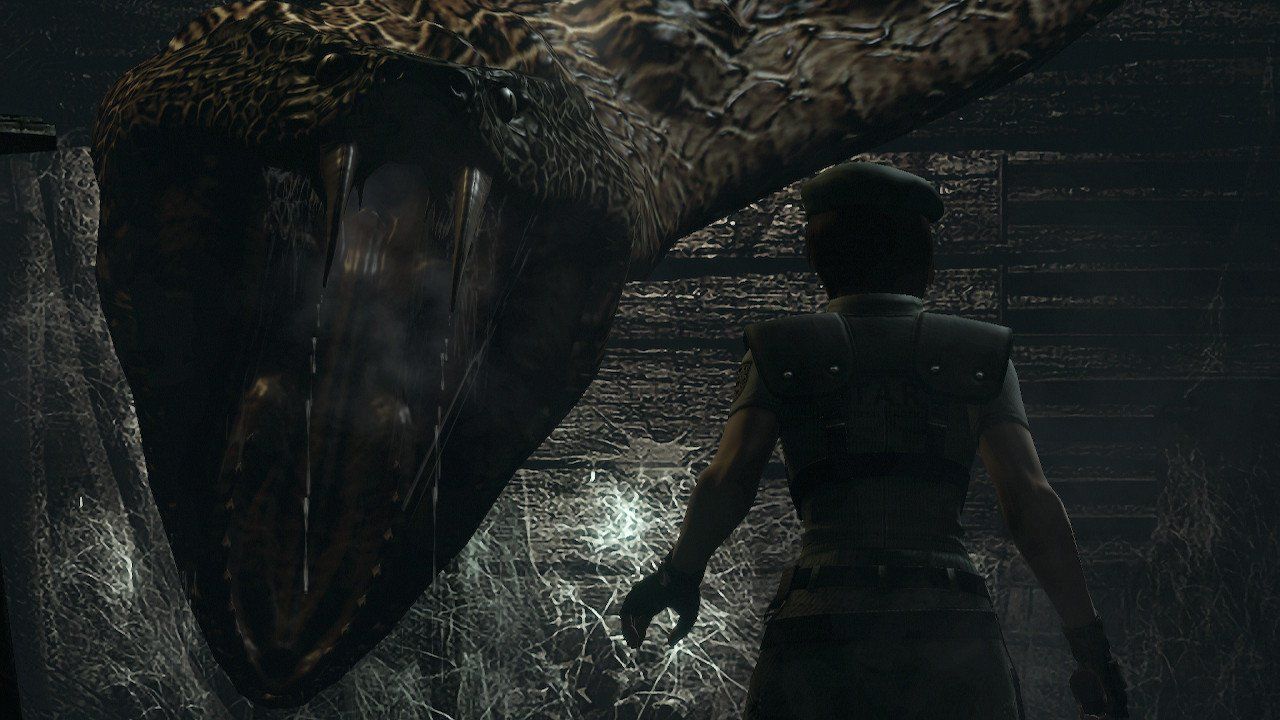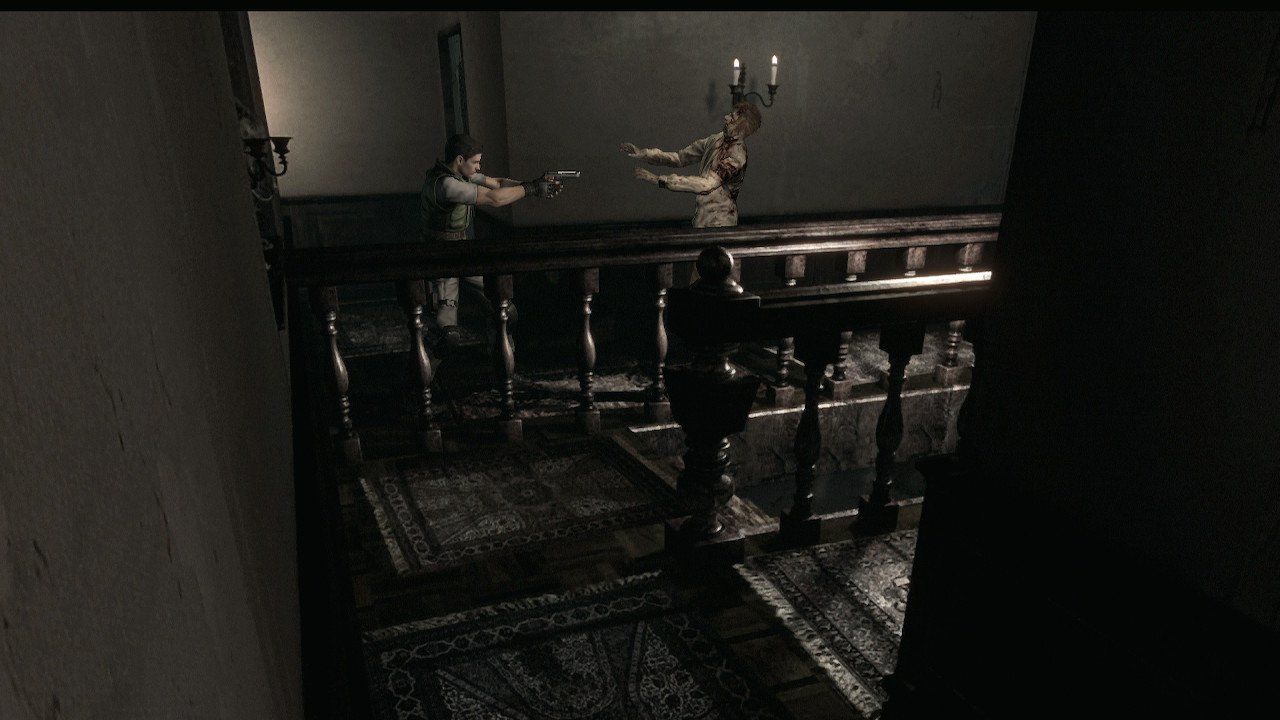There are a number of iconic video games in the horror genre, such as Silent Hill and Dead Space. One franchise stands above all others in popularity and longevity: Resident Evil. There are seven core titles (eight if we count Resident Evil Zero), and a number of spin-offs. It all began on the PlayStation in 1996 with the release of Resident Evil. Although horror games existed before it, Resident Evil arguably revolutionized the genre. The graphics are dated today however, which is where the remake comes in.
Resident Evil was remade on the GameCube in 2002. It retains the same gameplay as the original, but has improved graphics, new mechanics, and more. It was ported and later remastered in HD to a number of consoles afterward. The latest port is on the Switch. Nintendo announced a little while ago that it would be bringing Resident Evil Zero, Resident Evil, and Resident Evil 4 to its current console. Although the game may feel dated in some areas in comparison to recent titles, Resident Evil is nonetheless a compelling, and scary title.
Resident Evil is played from a third person perspective. However, it is different than common third person games today. Instead of moving freely between areas, the camera is at a fixed angle until the player moves to another spot. You can play as either Chris Redfield or Jill Valentine. There are numerous puzzles to solve, which involve keys, items, and plenty of backtracking. Along the way, you'll encounter zombies, infected dogs, mutated spiders, and more. There are different firearms as well as a survival knife.
The story follows Chris Redfield and Jill Valentine. These two Raccoon City S.T.A.R.S. officers find themselves in a mansion called the Spencer Estate. Something happened in Raccoon City, and it's up to these two officers to investigate and find out the truth behind these mysterious incidents. There are some story differences based on the character you play.
Horror games are all about atmosphere. If you don't feel uneasy while playing, then the game is missing something. Resident Evil is excellent at creating tension. There are four core areas, but players will be spending a good majority of the time at Spencer Mansion. Those who recently played the Resident Evil 2 remake will recall the police station. Spencer Mansion is reminiscent of that. There's always a sense of unease as the player navigates the mansion, never knowing what to expect behind a closed door. The tone is nicely set right from the first zombie scene. Certain jump scares are carefully placed, such as creatures emerging from windows after you complete a certain objective.
The gameplay is unique thanks to the camera. However, this has its positive and negatives. While it does create for some chilling sequences, such as turning a corner and being unprepared for a zombie attack, it can also feel limiting. Resident Evil 7: Biohazard utilized the "RE Engine," an in-house engine created by Capcom. It was used again in the Resident Evil 2 remake. Those games were able to perfectly capture the horror, and yet allowed the player full freedom to walk around. In comparison, the fixed camera angle in Resident Evil can feel constraining. It can also be annoying when you're tilting the control stick, but then tilt it back on instinct when the angle changes (The HD remaster does feature alternate control styles, so experiment to see which one you prefer). This is not to say Resident Evil's fixed camera style is bad, but it's easy to think that the game would be even more compelling if it were remade today using the RE Engine.
Although there will be plenty of times when you're engaging enemies, solving puzzles is what you'll be doing primarily. The puzzles are quite in-depth, requiring the player to consider the areas carefully. While sometimes frustrating due to the limited inventory slots, solving puzzles can be very rewarding. In the final area, there's a sense of "Eureka!" after solving a puzzle relating to words and pictures, as an example.
The game often encourages saving precious ammo, and burning any zombies you do defeat. If you don't burn them, they will return as Crimson Heads, which are much more terrifying versions that are incredibly fast. There are also some mutated creatures to deal with. The snake was arguably the biggest highlight, though the camera can sometimes work against the player unintentionally during the boss fight. One very intense sequence was evading Lisa late in the story. It was terrifying thanks to the sound effects, and area layout.
There is one aspect that can hurt the overall experience: the game's save system. Resident Evil utilizes a limited saving function in the form of Ink Ribbons. There are a number of Ink Ribbons hidden throughout the different areas. One ink ribbon equals one save. So if you happen to run out of Ink Ribbons, you won't be able to save your game until you find another one. If you aren't careful, it's possible to lose progress.
Now, one may argue that the Ink Ribbon system offers another layer of inventory control and challenge. While that could be true, it is legitimate to fall under the mindset of it being more of an annoyance than a challenge. If you're playing on the game's normal mode, you may be tempted to save often, which can hurt you later in Spencer Mansion. The game is already challenging on normal, and players have to carefully manage their inventory of items. The added challenge of knowing when to use Ink Ribbons is often very frustrating. Resident Evil 7 and the Resident Evil 2 remake both removed the Ink Ribbons from their normal mode, and those games are still a genuine challenge. The typewriter rooms in Resident Evil are good enough because it forces players to utilize saving in specific areas, no auto-saving. Thus, the Ink Ribbons were not necessary, or at the very least, they could have been contained to hard mode.
A game like Resident Evil is not going to have a bombastic soundtrack - and that's not a bad thing. Here, the music is subtle and creates a scary environment. The early dining room is one example where music works to set the tone (The grandfather clock sound effect was a nice touch). In the Aqua Ring, the music is hauntingly beautiful. As for the story, Chris and Jill are likable protagonists, and there are some interesting twists. A nice, subtle storytelling technique is through files, in which the player gains insight into the atrocities Umbrella Corporation has been involved in, and how individuals were forever impacted because of them.
Overall, Resident Evil is a very good remake of the classic PlayStation title. It looks great on the Switch (Play it on a TV screen over handheld when possible). However, while there are merits to the camera perspective, it does feel limiting in comparison to the Resident Evil 2 remake. The save system can also be very frustrating. The game is certainly worth playing, but the Resident Evil 2 remake and Resident Evil 7 work better for newcomers to the series. Also, the game costs $30 on the Switch, which is $10 more than on other consoles. That's something to keep in mind if you don't care about playing the game on the go.
4 out of 5 stars
A copy of Resident Evil was purchased by TheGamer for this review. The game is available now on the Switch eShop.
Resident Evil

